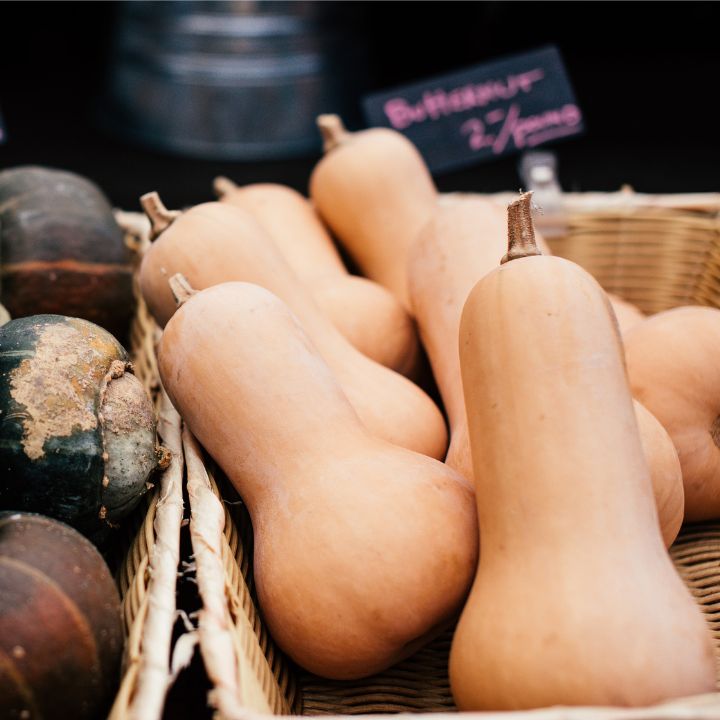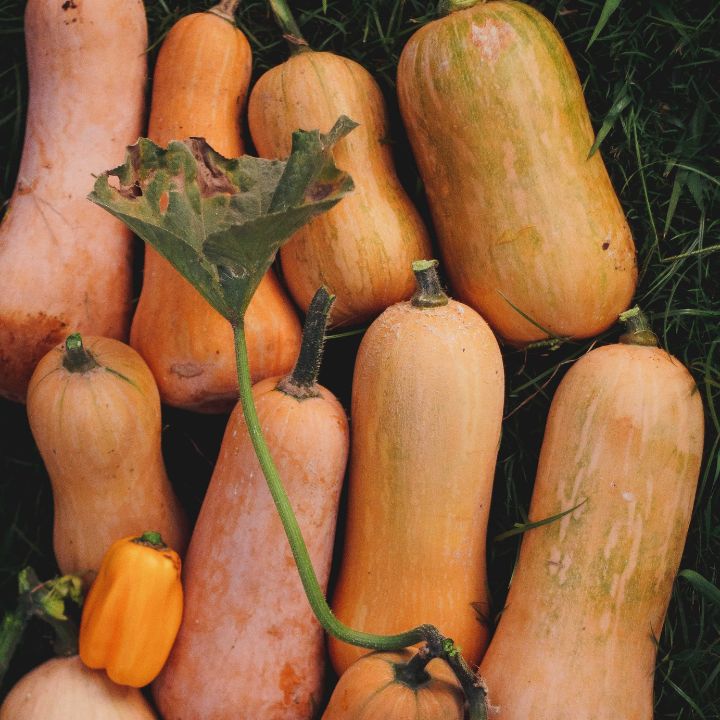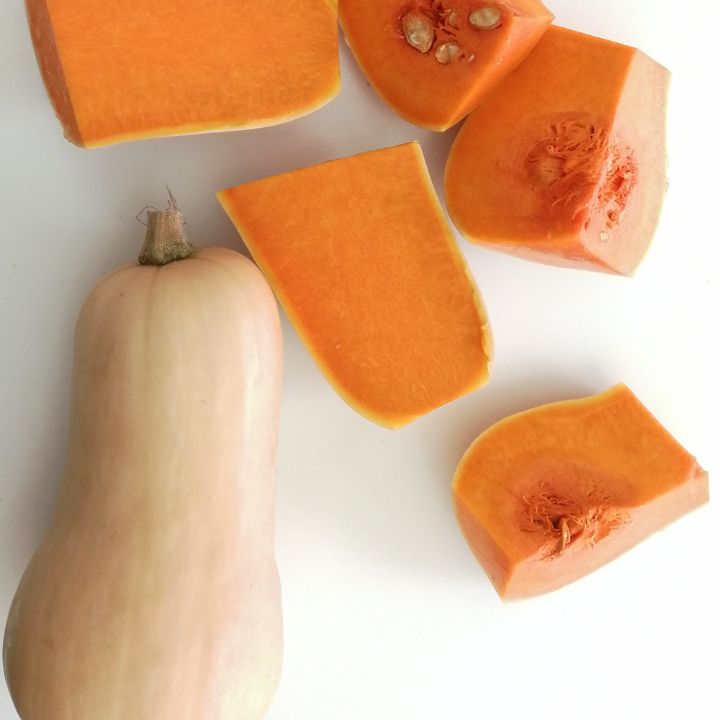Butternut squash puree is a healthy and versatile ingredient that can be used in a variety of baking recipes. This puree is made from cooked butternut squash that has been mashed or pureed until it is smooth and creamy. Butternut squash is a type of winter squash that is rich in nutrients and has many health benefits.



Health Benefits
Fiber
One of the main health benefits of butternut squash puree is its high fiber content. Fiber is important for digestive health and can help lower cholesterol levels and reduce the risk of heart disease. Butternut squash is also rich in vitamins and minerals, including vitamin A, vitamin C, potassium, and magnesium. Vitamin A is important for eye health, while vitamin C is an antioxidant that can help boost the immune system. Potassium and magnesium are important for maintaining healthy blood pressure and nerve function.
Calories & Fat
Butternut squash puree is also low in calories and fat, making it a great ingredient for those looking to reduce their calorie intake or maintain a healthy weight. In addition, it is naturally sweet and can be used as a substitute for added sugar in many baking recipes.
Substitute for Butter
When using butternut squash puree in baking, it is important to use it as a substitute for butter or oil in recipes. This will help to reduce the calorie and fat content of the recipe while still providing a moist and flavorful texture. Butternut squash puree can be used in a variety of baking recipes, including muffins, breads, cakes, and cookies.
Baking
Substituting butternut squash puree for butter in baking can be a healthy and delicious option. The ratio of substitution depends on the recipe and the desired texture and taste. In general, butternut squash puree can be substituted for butter in a 1:1 ratio by volume. For example, if a recipe calls for 1 cup of butter, you can use 1 cup of butternut squash puree instead.
However, it’s important to note that butternut squash puree has a higher water content than butter, so it may affect the texture and moisture level of the baked goods. Therefore, it’s recommended to start by substituting a portion of the butter with butternut squash puree and gradually increasing the amount until you find the desired result.
In some recipes, it may be necessary to adjust the other ingredients to compensate for the substitution. For example, if you’re substituting butternut squash puree for butter in a cookie recipe, you may need to increase the amount of flour or add an additional binding agent like eggs or chia seeds.
It’s also important to keep in mind the flavor profile of butternut squash puree. It has a slightly sweet and nutty flavor, which can complement many baked goods. However, if the recipe already has a strong flavor, such as in a savory dish, it may not be the best substitution.
Here are a few tips on how to use butternut squash puree in baking:
Measuring
Substitute butternut squash puree for half or all of the butter or oil in the recipe. For example, if a recipe calls for 1 cup of butter, you can use 1/2 cup of butternut squash puree and 1/2 cup of butter.
Taste
Adjust the amount of sugar in the recipe as needed. Butternut squash puree is naturally sweet, so you may be able to reduce the amount of sugar in the recipe. Start by reducing the sugar by 1/4 cup and adjust as needed.
Moisture
Increase the amount of liquid in the recipe. Butternut squash puree can make a recipe more dense, so you may need to add more liquid to achieve the desired texture. Start by adding 1/4 cup of liquid and adjust as needed.
Flavor
Experiment with spices and flavors. Butternut squash puree pairs well with warm spices like cinnamon, nutmeg, and ginger. You can also add vanilla extract or citrus zest for added flavor.
Specific Substitutions
Here are a few examples of how to use butternut squash puree in baking:
Butternut Squash Muffins
Substitute 1/2 cup of butternut squash puree for 1/2 cup of butter in your favorite muffin recipe. Add 1 teaspoon of cinnamon and 1/2 teaspoon of nutmeg for added flavor.
Butternut Squash Bread
Substitute 1 cup of butternut squash puree for 1 cup of butter in your favorite bread recipe. Add 1/2 cup of chopped walnuts and 1 tablespoon of honey for added texture and sweetness.
Butternut Squash Cake
Substitute 1 cup of butternut squash puree for 1 cup of oil in your favorite cake recipe. Add 1 teaspoon of vanilla extract and 1/2 teaspoon of ground ginger for added flavor.
Butternut Squash Cookies
Substitute 1/2 cup of butternut squash puree for 1/2 cup of butter in your favorite cookie recipe. Add 1/2 cup of chocolate chips and 1/4 cup of chopped pecans for added texture
How to Make Butternut Squash Puree
Making butternut squash puree is a simple process that involves a few easy steps. Here’s how to make it:
Ingredients:
- 1 medium-sized butternut squash
- Water
Instructions:
- Preheat your oven to 400°F (200°C).
- Cut the butternut squash in half lengthwise, and scoop out the seeds and fibrous flesh from the center.
- Place the squash halves, cut side down, on a baking sheet.
- Pour water onto the baking sheet, enough to cover the bottom and create a small pool.
- Bake for 45-50 minutes, or until the flesh is soft and easily pierced with a fork.
- Remove the squash from the oven and let it cool for a few minutes.
- Scoop out the flesh from the squash halves and discard the skin.
- Place the squash flesh in a food processor or blender and blend until smooth.
- Add a little water if needed to reach your desired consistency.
Your butternut squash puree is now ready to be used in your favorite baking recipes.
Note: You can also steam or boil the butternut squash instead of roasting it in the oven. Simply cut the squash into cubes, and steam or boil until the flesh is soft. Drain the squash and puree in a food processor or blender until smooth.

